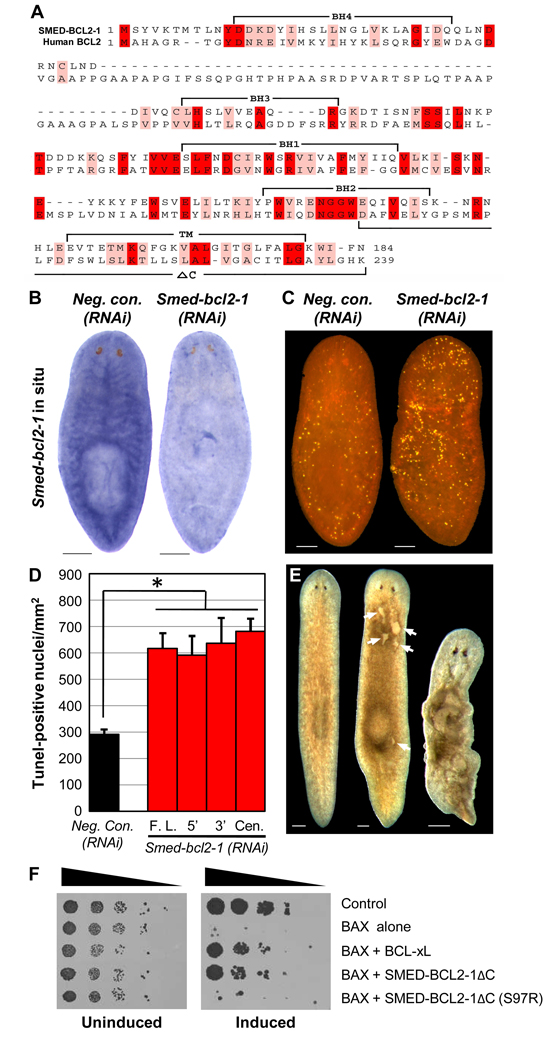Fig. 6.
A S. mediterranea homolog of BCL2. (A) Alignment of SMED-BCL2-1 predicted protein sequence (GenBank accession no. FJ807655) with human BCL2 protein sequence (GenBank accession no. NM_000633) generated with Expresso (Armougom et al., 2006). Identical residues are shaded red and conserved residues are shaded pink. The 4 BCL2-Homology (BH) domains, transmembrane region (TM), and C-terminal region deleted in SMED-BCL2-1ΔC (ΔC) are indicated. (B) Smed-bcl2-1 expression pattern visualized by in situ hybridization. Representative animals from 2 independent experiments (n ≥ 12 for each condition) are shown. Scale bars = 200 µm. (C) Smed-bcl2-1(RNAi) animals exhibited elevated TUNEL staining. Scale bars = 100 µm. (D) Average TUNEL levels for 3 independent experiments (n ≥ 21 for each condition). RNAi constructs generated dsRNA corresponding to the full-length ORF (F.L.) or nonoverlapping regions at the 5’, 3’, and central parts of the ORF. Error bars = +/− s.e.m. * = p value for two-tailed Student’s t-Test < 1 × 10−3. (E) > 90% of Smed-bcl2-1(RNAi) animals (n > 100) developed tissue lesions on their dorsal surface (middle, arrows) and went on to exhibit atrophy and lysis (right), as compared to 0% of Negative control(RNAi) animals (n > 100). Scale bars = 200 µm. Results in (C, D) are for animals analyzed prior to the appearance of lesions. (F) S. cerevisiae was transformed with the indicated constructs (empty vector used for controls) and plated in serial dilution (left to right in each panel). Induced expression of murine BAX (right) is lethal. This effect was rescued by human BCL-xL or SMED-BCL2-1ΔC, and was abrogated by mutation of SMED-BCL2-1ΔC Ser97 to Arg (S97R).

